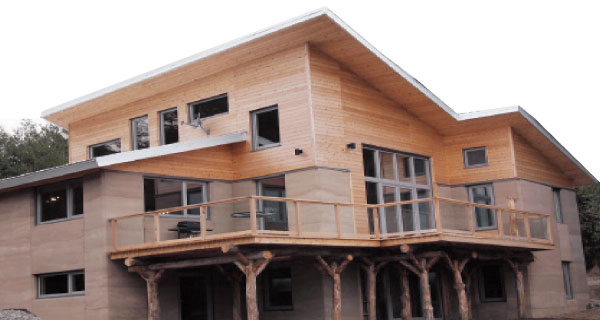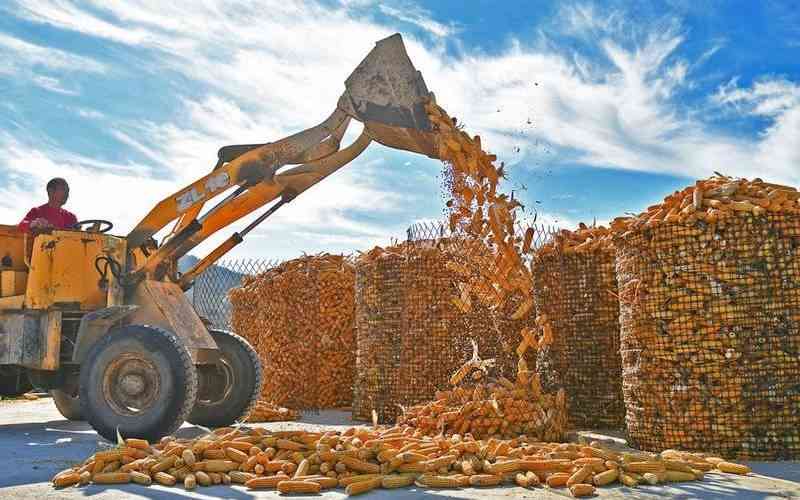 |
|
rammed earth home |
By LYDIA LIMBE llimbe@standardmedia.co.ke
The first image that comes to the mind of many when you talk about rammed earth houses is the grass-thatched mud house synonymous with rural areas. Most people’s reaction is that there is no way one can build a modern house using mud.
Well, it is possible. Rammed earth technology has been around since the 18th century, but has seldom been used in Kenya. Rammed earth homes are built by putting in place the form of the house, which is usually a plywood structure that provides the outline of a wall.
A mix of soils is then rammed into the walls, either by hand or machine. When everything is packed tightly, the forms are removed, and what is left is a solid, stable wall. The ramming is repeated until the entire house is built. The wall is built layer by layer horizontally.
The first thing a rammed earth homeowner needs to do is to check the strength of the soil to be used. “Compression test can be done by geo-technological experts at the Kenya Agricultural Research Institute or done on site,” says Franklin Mwango, a lecturer at Maseno University.
You need to mix the soil with water first before carrying out the site test. Put the soil in a bucket little by little using a spade. Divide the bucket into ten equal parts, and then add water into one-tenth of it. Make a smaller mould of ten cubic centimetres from this mixture, and once dry, put a 150 kilogramme weight on it.
Strength
“Rammed earth technology is such that it should be able to hold up to 150 kilogrammes of weight per square inch. Leave the weight on for 24 hours. If it cracks, you have to create another mixture. If it holds, you are good to go,” adds Mwango.
If it cracks it may mean that there is more clay in the soil composition than sand, and you may have to bring in sand from another place. The additional transportation cost may increase the overall cost of building the house.
Some people add lime to make the mixture hard. Continue carrying out these strength tests while recording the soil mixtures until you find one that can withstand the 150-kilogramme weight. The foundation is dug out normally. Even the plans of the house are drawn by the architect as usual — with the electrical and plumbing lines drawn out well in advance.
Walls
It is this soil that had been dug out that will form the walls. Place stones on the dugout foundation, then ram earth on top of it. But because rammed earth absorbs a lot of water, the edges of the floor have to be cemented.
You can finish the floor by using conventional finishing methods like laying tiles, or using wooden engineered floor-boards.
To create the wall, one can use steel or plywood panelling. “The steel or plywood panelling have to be about four feet wide and eight feet long. Since in Kenya we do not have the ramming machine, doing it manually means covering about six inches high of every pounding,” he says.
The mixture is pounded by a seven-kilogramme metallic compactor. Pour the soil mixture between the steel or plywood panels and begin to pound.
Stay informed. Subscribe to our newsletter
The key thing is to know when to stop pounding, and add the following layer of soil. “Do not get carried away with the rhythm of the pounding. When you start it makes a muffled sound, but as it begins to get compacted, the sound gets louder and louder. The moment you hear it making a metallic sound, it is time to stop and add on the next layer,” says Moses Hunja, an architect.
He further warns that this sound has to be watched keenly, so that the next layer of soil gets to gel with the already compacted one and avoid cracks. This method is repeated until the wall is to the desired height — the average being 2.4 metres high.
This process sounds labour intensive. “Yes, it is labour intensive. The mechanical compactor is much faster, but it is not available here in Kenya, hence the use of physical labour. You will use about one fundi for a metre of the wall. Therefore the bigger the size of the house, the more the number of hands needed,” Mwango points out.
Plumbing
Plumbing pipes and electrical conduits are placed within the mould and earth rammed around it. Even door and window shapes are framed using the panels, placed along the walls and earth-rammed through it.
After every layer, the fundis have to keep checking on the alignment of the wall, that it is 90-degrees through and through.
A rammed earth wall when finished is 45-60 centimetres wide – wider than a wall made of conventional materials. This means that it can hold any roof. Hunja says that one may opt to install a wall plate to hold the roof, or a lintel.
“Since rammed earth absorbs water, the roof has to be placed such that when it rains it doesn’t get to the wall. You can give the wall another type of exterior finish that will protect it. But rammed earth is a beautiful finish in itself — with layers of different colours from the soil forming with every layer of compaction. If you like it that way, then create an eve-roof,” says Mwango.
The conventional size of an eve-roof is 300-350 milimetres wide from the wall. You can also create one that is 600 milimetres wide. All the wet areas of the house like the kitchen and bathroom can be plastered and tiled.
Interest
Hunja says there has been a lot of interest by Kenyans in this technology, but those who have tried it are on the outskirts of the city — the majority being lodges. One such is the Kuki Gallman Foundation in Nanyuki.
A house built with rammed earth technology has excellent thermal properties. During the day, it is cool inside, while at night it is warm.
Mwango is quick to point out that the roofing material one chooses should add to the thermal properties of the technology. “You can use makuti, clay tiles or stone-coated roofing sheets. Also put a ceiling that will work with thermal qualities of the roofing materials and the wall,” ne says.
 The Standard Group Plc is a
multi-media organization with investments in media platforms spanning newspaper
print operations, television, radio broadcasting, digital and online services. The
Standard Group is recognized as a leading multi-media house in Kenya with a key
influence in matters of national and international interest.
The Standard Group Plc is a
multi-media organization with investments in media platforms spanning newspaper
print operations, television, radio broadcasting, digital and online services. The
Standard Group is recognized as a leading multi-media house in Kenya with a key
influence in matters of national and international interest.
 The Standard Group Plc is a
multi-media organization with investments in media platforms spanning newspaper
print operations, television, radio broadcasting, digital and online services. The
Standard Group is recognized as a leading multi-media house in Kenya with a key
influence in matters of national and international interest.
The Standard Group Plc is a
multi-media organization with investments in media platforms spanning newspaper
print operations, television, radio broadcasting, digital and online services. The
Standard Group is recognized as a leading multi-media house in Kenya with a key
influence in matters of national and international interest.






